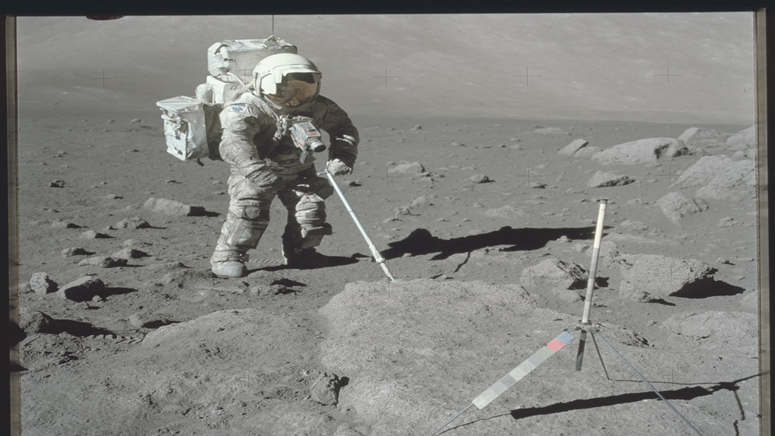Scientists reveal the age of the moon... after analyzing rocks collected by two astronauts in 1972

During the Apollo 17 mission in 1972, the last time humans walked on the moon, American astronauts Harrison Schmidt and Eugene Cernan collected about 110.4 kilograms of soil and rock samples and returned them to Earth for further study.
Half a century later, zircon crystals found in a piece of coarse-grained igneous rock, collected by Schmidt, are helping scientists better understand the composition and age of the Moon, the closest celestial body to Earth.

Based on crystallographic analyses, scientists said on Monday that the moon is about 40 million years older than previously thought, as it was formed more than 4.46 billion years ago, that is, within 110 million years of the formation of the solar system.
The main hypothesis for the formation of the Moon is that during the early stages of the solar system, a Mars-sized body called Theia collided with the Earth. The sediments, which are molten rocks, in space formed a disk of debris that orbited the Earth, forming the Moon. But the exact timing of the moon's formation is difficult to determine.
Mineral crystals formed after the sediment cooled and solidified. The researchers used a method called atom probe tomography to confirm the age of the oldest known solids that formed after the giant impact, which are zircon crystals found inside part of a type of rock called norite that Schmitt collected.

“I like the fact that this study was conducted on a sample that was collected and brought to Earth 51 years ago,” said cosmochemist Philip Heck, senior director of research at the Field Museum in Chicago, a professor at the University of Chicago, and lead author of the study published in the journal Geochemical Perspective Letters. “At that time, atomic probe tomography had not yet been developed and scientists could not have imagined the types of analyzes we do today.”
“It is interesting that all the oldest minerals found on Earth, Mars, and the Moon are zircon crystals,” said Bidong Zhang, a planetary scientist at the University of California and co-researcher on the study. “Zircons, not diamonds, last forever.”

Heck added, “Zircon is very hard and strong and survives the disintegration of rocks as a result of atmospheric erosion.”
A study led by Zhang published in 2021 used a technique called ion probe analysis to measure the number of uranium and lead atoms present in the crystals, and calculated the age of the zircon based on the transformation of radioactive uranium into lead over time.
The new study used atom probe tomography to ensure there was no confusion related to the lead atoms, confirming the age of the crystals.
“The giant collision that formed the Moon was a catastrophic event for the Earth and changed the speed of its rotation,” Heck said. After that, the Moon had an effect on stabilizing the Earth's rotation axis and slowing down the speed of rotation. The date of the formation of the Moon is important because only after it did the Earth become a habitable planet.”
Source: websites

